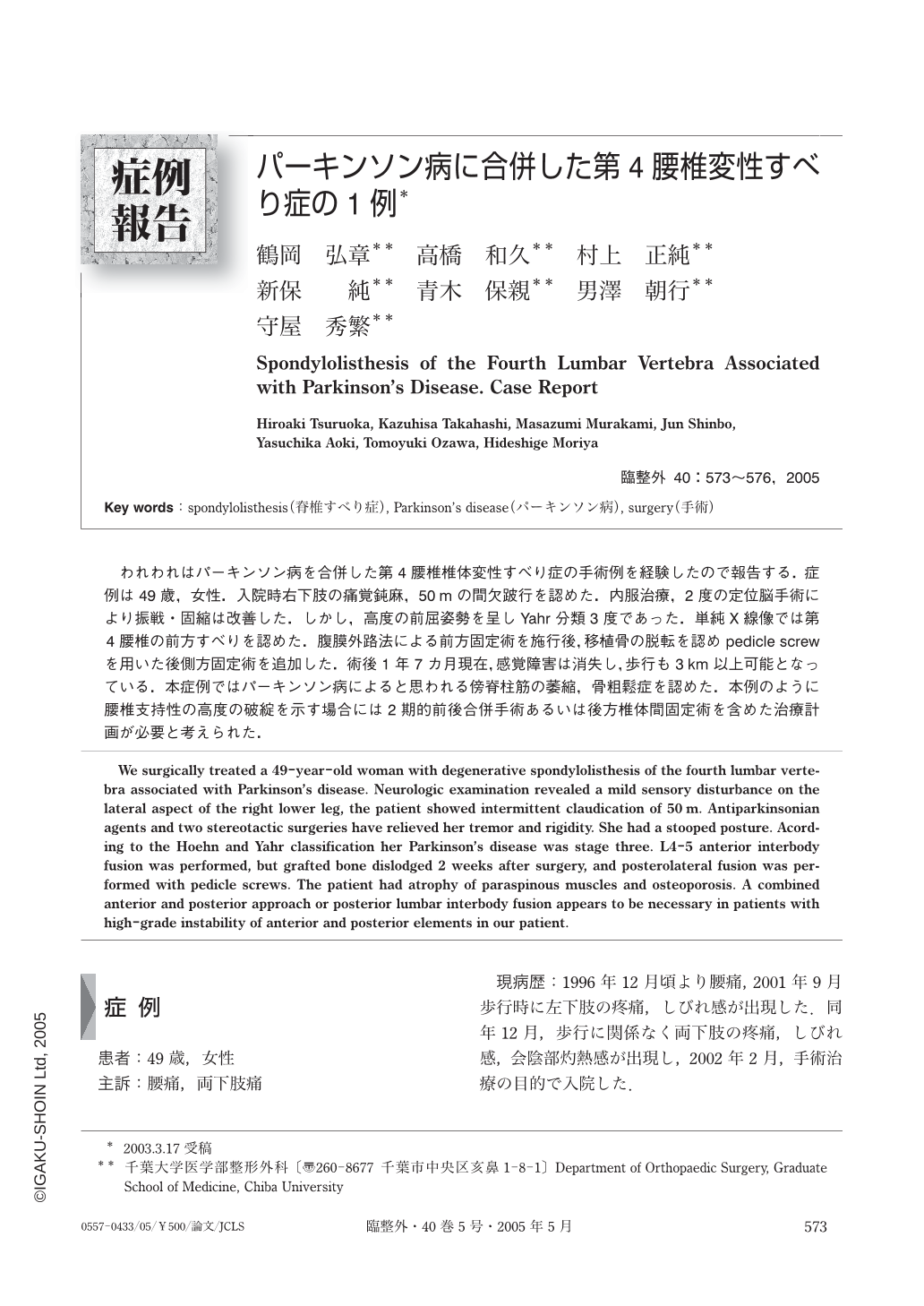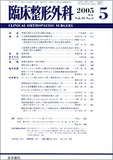Japanese
English
- 有料閲覧
- Abstract 文献概要
- 1ページ目 Look Inside
われわれはパーキンソン病を合併した第4腰椎椎体変性すべり症の手術例を経験したので報告する.症例は49歳,女性.入院時右下肢の痛覚鈍麻,50mの間欠跛行を認めた.内服治療,2度の定位脳手術により振戦・固縮は改善した.しかし,高度の前屈姿勢を呈しYahr分類3度であった.単純X線像では第4腰椎の前方すべりを認めた.腹膜外路法による前方固定術を施行後,移植骨の脱転を認めpedicle screwを用いた後側方固定術を追加した.術後1年7カ月現在,感覚障害は消失し,歩行も3km以上可能となっている.本症例ではパーキンソン病によると思われる傍脊柱筋の萎縮,骨粗鬆症を認めた.本例のように腰椎支持性の高度の破綻を示す場合には2期的前後合併手術あるいは後方椎体間固定術を含めた治療計画が必要と考えられた.
We surgically treated a 49-year-old woman with degenerative spondylolisthesis of the fourth lumbar vertebra associated with Parkinson's disease. Neurologic examination revealed a mild sensory disturbance on the lateral aspect of the right lower leg, the patient showed intermittent claudication of 50m. Antiparkinsonian agents and two stereotactic surgeries have relieved her tremor and rigidity. She had a stooped posture. Acording to the Hoehn and Yahr classification her Parkinson's disease was stage three. L4-5 anterior interbody fusion was performed, but grafted bone dislodged 2 weeks after surgery, and posterolateral fusion was performed with pedicle screws. The patient had atrophy of paraspinous muscles and osteoporosis. A combined anterior and posterior approach or posterior lumbar interbody fusion appears to be necessary in patients with high-grade instability of anterior and posterior elements in our patient.

Copyright © 2005, Igaku-Shoin Ltd. All rights reserved.


